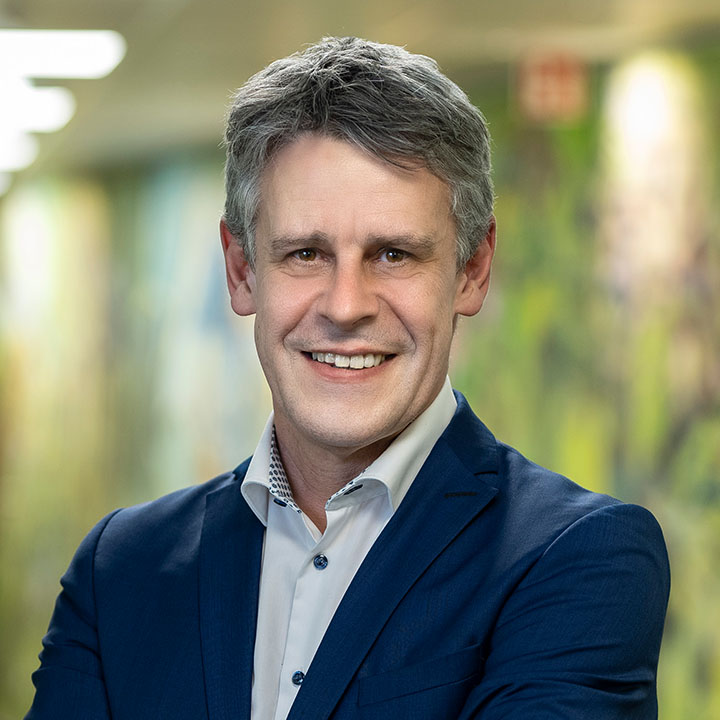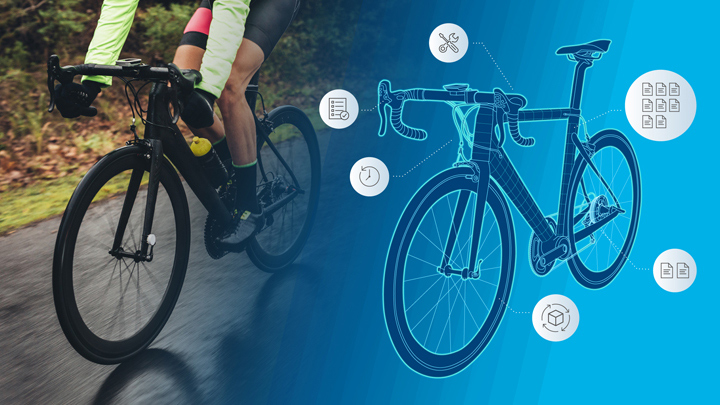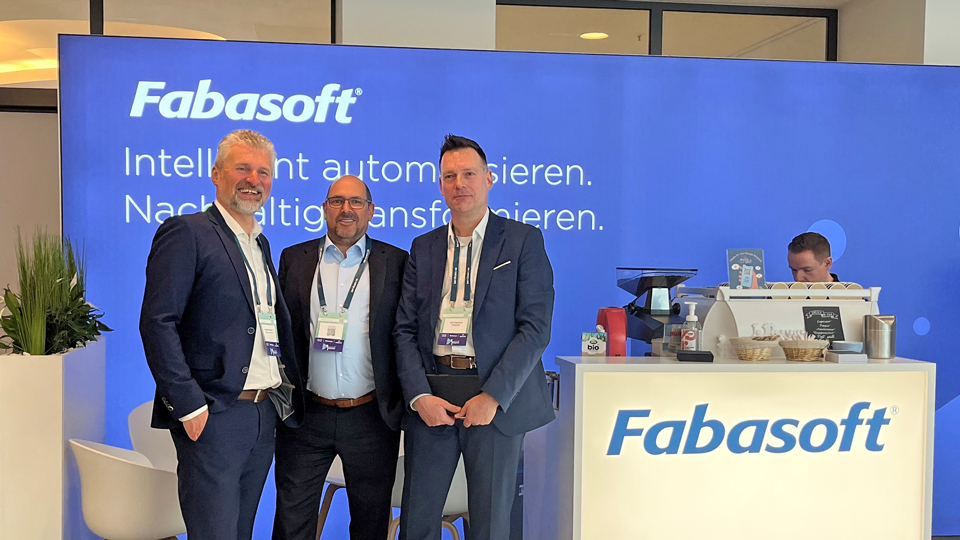Digital twins not only represent IoT objects, they also reflect organisations
An entire racing bike on the computer? Yes, that can be done! A digital twin is the electronic representation of a real object like that – or even of a logical organisation. The electronic twin derives the required data from his templates in real time, for example from several sensors or from historical and operative data, and uses them to create a model which is commonly known by the term digital twin. With the help of Artificial Intelligence, this model can be used to simulate the benefits and risks of a particular development, for example a merger. A digital twin is therefore not only a representation, but also an instrument of control and planning.
Setting up a digital twin
The concept of digital twins is increasingly being used in the areas of Industry 4.0, the Internet of things and even in smart cities. One of its characteristics is the necessity of consolidating and unifying information that can be used in many ways – a solid data basis for virtual and augmented reality. The main benefit: An overview of the entire structure which is represented on the basis of digital data with all the necessary details. This may be a smart city like Stockholm or an Intercity Express train. Predictive maintenance or self-learning traffic management are no longer a problem.
Digital twins usually have a modular design. Similarly to a racing bike which is made up of different components from different suppliers, a digital twin is structured on the basis of modules rather than monolithic entities. With the help of simulations, the twin can be used to test whether adding or removing modules has any positive or negative effects. This concerns components as well as business areas.
Since a supply chain is made up of different stages and suppliers, algorithms calculating the “travelling salesman problem“ can be used to check the supply chain for optimisation possibilities while simultaneously improving logistics. It is also important to keep in mind that a digital twin can be duplicated as often as required. AI algorithms running in parallel are much faster in finding a solution than a single model that has to be modified many times.
In view of the fact that any alteration of the original can be followed and logged in the digital twin just like in a mirror, a chain of modifications that occurs for example in the course of a hacker attack can be fully traced. On the basis of the log files, users can identify the point of time and the part of the system where the unauthorised changes took place. Digital twins are therefore very useful in terms of system security.
How to build a DTO
Analysts of Gartner Group say that it is now possible to represent an entire organisation in a digital twin. Digital twins for organisations (DTO) need to have such a degree of detail that they will allow to model entire decision, operating and change processes of a company – whether in the real or the fictitious world. They can recognise potential errors or risks early on, even before they cause any damage in reality.
A DTO can be built in different ways. As stated above, historical, operative and master data as well as analytical tools and machine learning are necessary to create such a model. However, this approach is arduous, prone to errors and very time-consuming. There is an easier way: Capturing organisational structures automatically for the purpose of process modelling. Whether it is a research institute, a hospital, an administrative organisation or a business company – each organisation builds on its processes that generate added value.
The automated setup of the organisational structure which consists of departments and roles as well as of business units within an organisation is the starting point of every process modelling. One option is that the IT administrator of the Cloud application defines these entities and their functions (releases, forwarding, etc.) in a solution such as the Fabasoft Cloud, another one that this information is imported from an ERP system via an interface. In this way, a consistent and comprehensive data model is obtained.
The organisational structure is then imported into a Cloud solution which represents and allows to manage the entire organisation. As a result, releases can for example be addressed on the basis of roles instead of specific persons, which makes room for a high level of flexibility. It is therefore not necessary to adapt processes whenever the organisational structure changes. The DTO model – which can be extended and adapted individually – also evolves and accurately reflects reality. It is now ready to be used for simulations or control processes.




